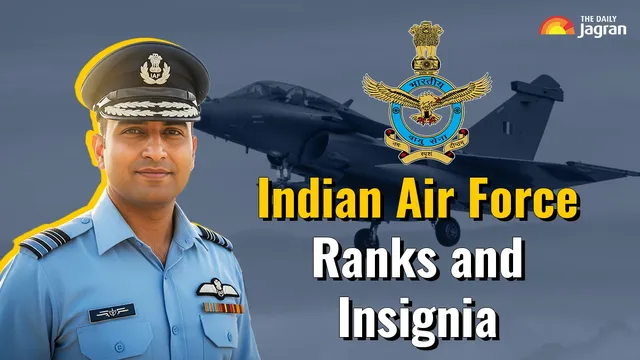- By Anshika Verma
- Sat, 16 Aug 2025 03:34 PM (IST)
- Source:JND
Indian Air Force Ranks and Its Insignia: The Indian Air Force (IAF), a world where the sky is a canvas, and every rank is a stroke of pride that has been achieved with utmost hardwork, dedication and years of experience. The Indian Air Force was established on October 8, 1932, as the Royal Indian Air Force under British rule, starting small with just four Westland Wapiti biplanes and a handful of gutsy pioneers. With time, it has become one of the most powerful weapons of India.
In 1950, when India became a republic, the “Royal” was shed, and the IAF soared into its own identity. The Indian Air Force Rank Structure and Insignia is divided into three categories or tiers: Commissioned Officers, Junior Commissioned Officers (JCOs), and Non-Commissioned Officers (NCOs) or Airmen. Each level or tier has its own flavor,responsibilities, and those eye-catching badges that represent their bravery and commitment.
IAF Rank Structure & Their Insignia:
Rank | Insignia | Responsibilities |
Flying Officer | One thin stripe | This rank is handled by the young professionals and pilots, tackling basic level operations. |
Flight Lieutenant | Two thin stripe | This rank is for supervisory roles, managing small teams. These pilots undergo rigorous training. |
Squadron Leader | One thick stripe | This rank is achieved after several years of dedication, hardwork, services and training. These are seasoned pilots with years of experience. |
Wing Commander | One thick stripe and one thin stripe | This rank is the equivalent of a Lieutenant Colonel and they are responsible for operation training, readiness and overall efficiency. |
Group Captain | Four thin stripes | These are senior-level officers who are experienced leaders responsible for commanding squadrons and handling major units. |
Air Commodore | One thick stripe with an eagle emblem | This rank holds significant responsibility and authority. They are seasoned leaders who are responsible for the training of aircrews and maintenance of aircraft. |
Air Vice Marshal | One thick stripe, an eagle emblem and a star | This rank helps in shaping and implementing the IAF’s operational strategies. They served in several difficult situations throughout their career. |
Air Marshal | One thick stripe, an eagle emblem and two star | This rank plays a pivotal role, helps in strategic planning, operational training, and the overall functioning and requirements of the Air Force. |
Air Chief Marshal | National emblem with three stars | This is the highest ranking officer, with a wealth of experience and deep knowledge of aerial warfare, they lead the air force with a mission to succeed. |
Junior Commissioned Officers (JCOs), and Non-Commissioned Officers (NCOs):
Rank | Insignia | Responsibilities |
Aircraftsman | No insignia | They don't have any insignia, start at the bottom as an Aircraftman—no stripes, just a blank slate and a fire to prove themselves. |
Leading Aircraftman | One chevron | These individuals are skilled technicians and craftsmen who play a crucial role in managing the operational readiness of the IAF’s aircraft. |
Corporal | Two chevrons | A Corporal in the Indian Air Force is a non-commissioned officer who serves as a mediator between higher-ranking officers and junior airmen, shows exceptional expertise. |
Sergeant | Three chevrons | These officers maintain discipline, order, and efficiency within the ranks. Their experience and leadership improves the overall efficiency of the IAF. |
Junior Warrant Officer | A single chevron and the Ashoka lions | Meet the Junior Warrant Officer, the entry into JCO land. These people have extensive experiences in their fields, be it technical or operational. |
Warrant Officer | Two chevrons plus the lions. | These individuals serve as technical advisors for the officers, providing major guidance in their specialised fields and department, which can range from aviation and engineering. |
Master Warrant Officer | Three chevrons and a braid | They serve as mentors to junior personnel officers, ensuring the highest standards of professionalism and excellence in their particular departments. |

